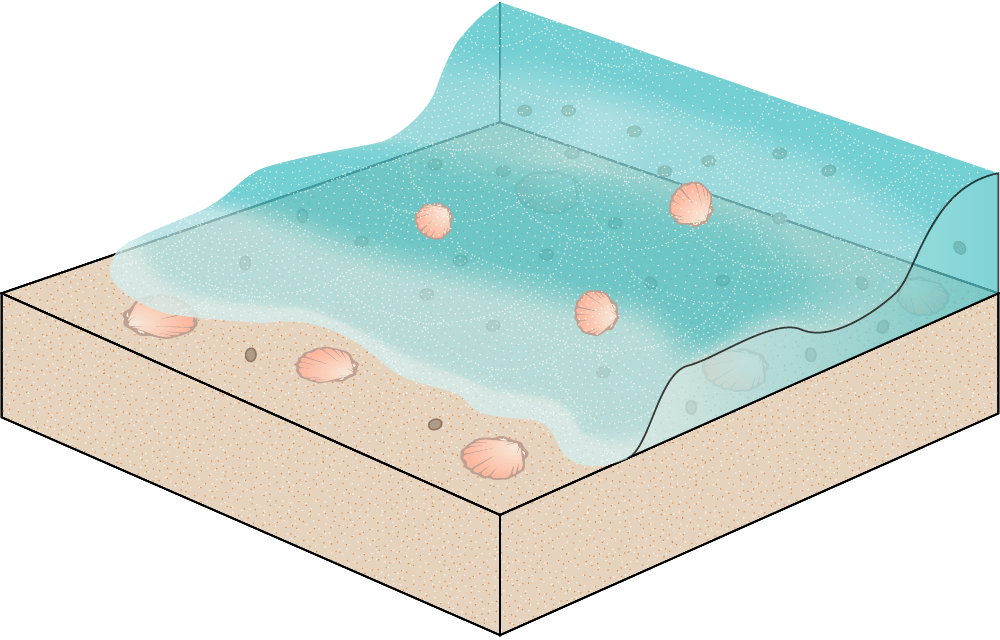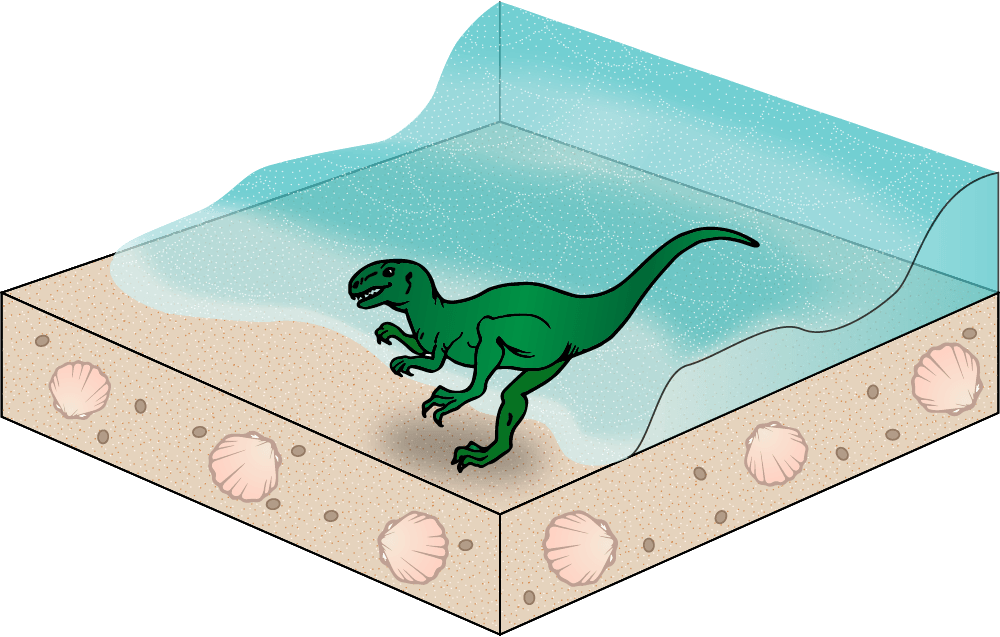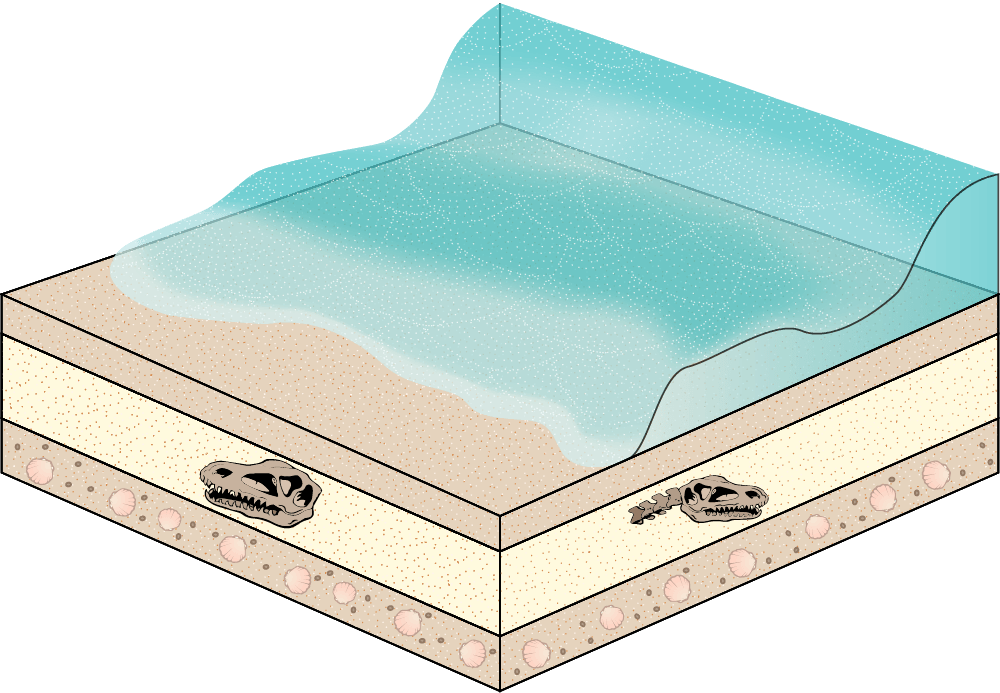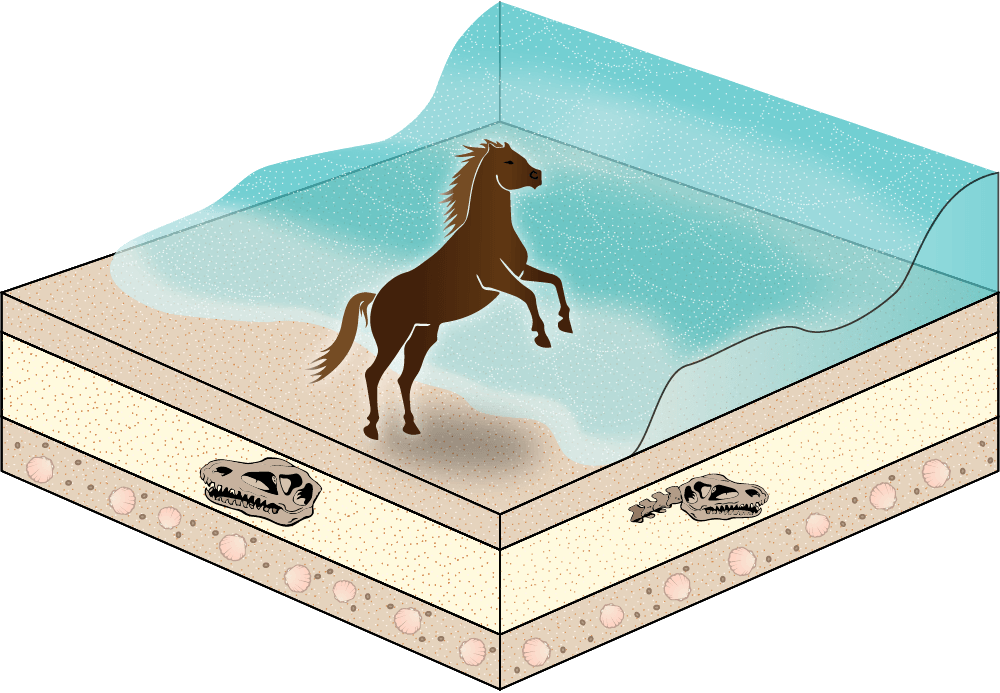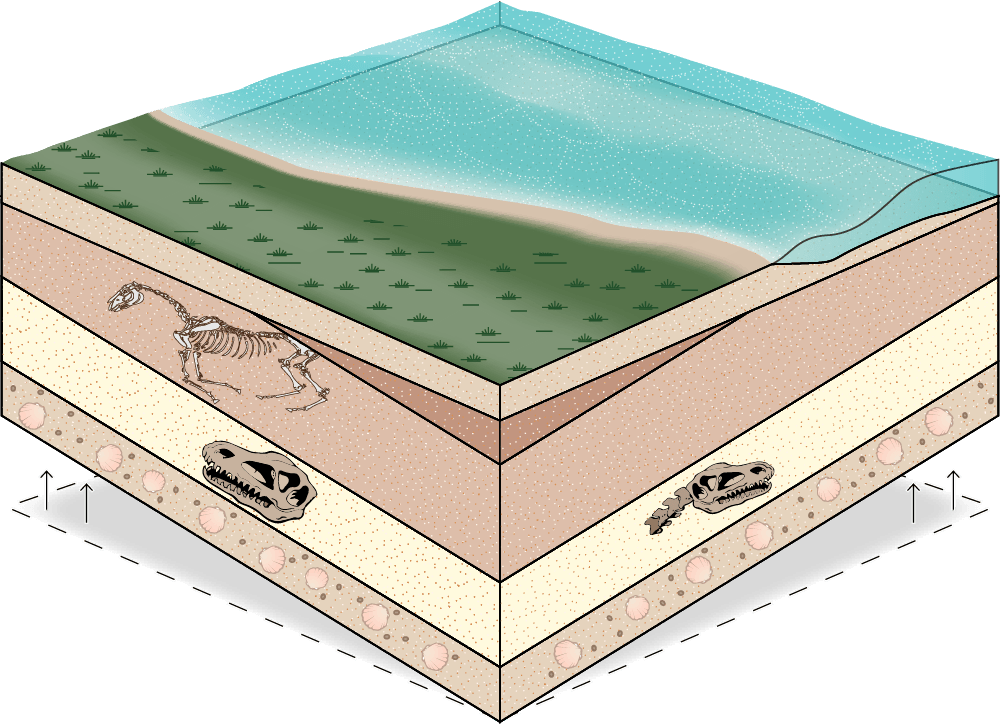Animal remains are most likely to be fossilized if their hard parts are covered by layers of sediments soon after death. With time and pressure, these sediments, such as sand, plant debris, or ash, become compressed into rock. Therefore, fossils are found in sedimentary rock, like sandstone, shale, limestone and coal.
Igneous rock, like granite and basalt, is formed by molten rock erupting from deep within the earth. Metamorphic rock, such as marble, is formed by tremendous heat and pressure. Fossils are not usually found in either igneous or metamorphic rocks.
Let’s look at a hypothetical fossil locality to see this process in action.
100 million years ago
Scallops and other invertebrates inhabit the sea in this area. When they die, they are covered by sand that settles on them.
75 million years ago
Pressure compacts the loose sandy sediments into hard sandstone. Dinosaurs now live, and die, in the locality. Like the scallops before them, their bodies are covered by sand.
50 million years ago
There is a tremendous volcanic eruption in the area. The ash thickly covers the land, and for a while the land cannot support much life.
20 million years ago
A Parahippus, a 3-toed horse common at the time, dies at the locality. Like the other creatures before it, its body is buried in sand and sediments by wave action.
3 million years ago
The massive force of an earthquake causes layers of sediments to tilt and push upward.
Today
Forces of erosion, such as water moving against rock for millions of years, gradually wears away the land surface and a few of the rock layers beneath it. The fossilized bones of the horse, hidden for millions of years, are exposed above the ground.
